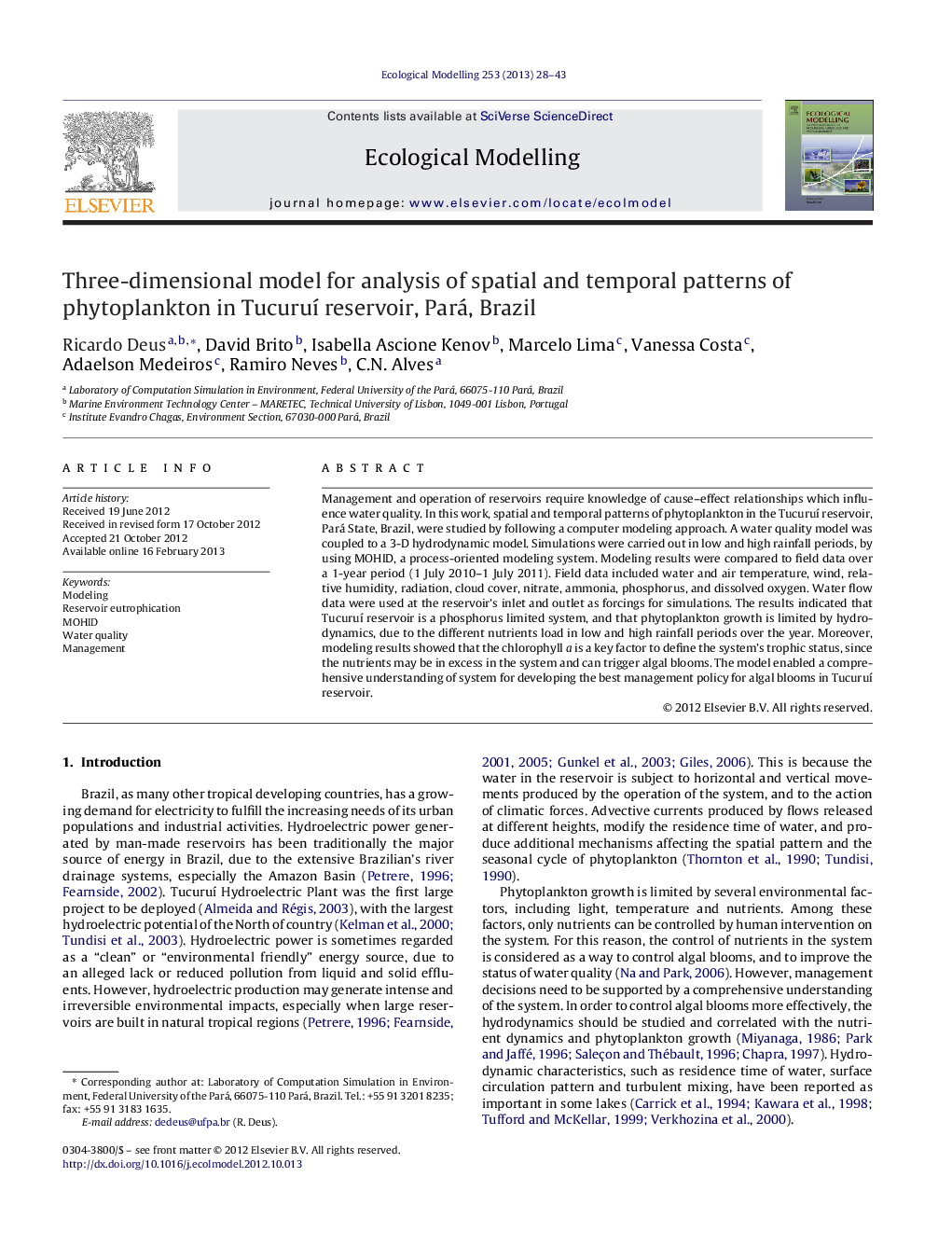| Article ID | Journal | Published Year | Pages | File Type |
|---|---|---|---|---|
| 4376219 | Ecological Modelling | 2013 | 16 Pages |
Management and operation of reservoirs require knowledge of cause–effect relationships which influence water quality. In this work, spatial and temporal patterns of phytoplankton in the Tucuruí reservoir, Pará State, Brazil, were studied by following a computer modeling approach. A water quality model was coupled to a 3-D hydrodynamic model. Simulations were carried out in low and high rainfall periods, by using MOHID, a process-oriented modeling system. Modeling results were compared to field data over a 1-year period (1 July 2010–1 July 2011). Field data included water and air temperature, wind, relative humidity, radiation, cloud cover, nitrate, ammonia, phosphorus, and dissolved oxygen. Water flow data were used at the reservoir's inlet and outlet as forcings for simulations. The results indicated that Tucuruí reservoir is a phosphorus limited system, and that phytoplankton growth is limited by hydrodynamics, due to the different nutrients load in low and high rainfall periods over the year. Moreover, modeling results showed that the chlorophyll a is a key factor to define the system's trophic status, since the nutrients may be in excess in the system and can trigger algal blooms. The model enabled a comprehensive understanding of system for developing the best management policy for algal blooms in Tucuruí reservoir.
► We modeled the Tucuruí reservoir, Brazil, for assess phytoplankton growth. ► Simulations were carried out in low and high rainfall periods, by using MOHID. ► We reproduced horizontal and vertical gradients, temporal and spatial variability. ► Model showed chlorophyll a is a key factor to define the system's trophic status. ► Model can simulate several scenarios, by changes in reservoir management.
